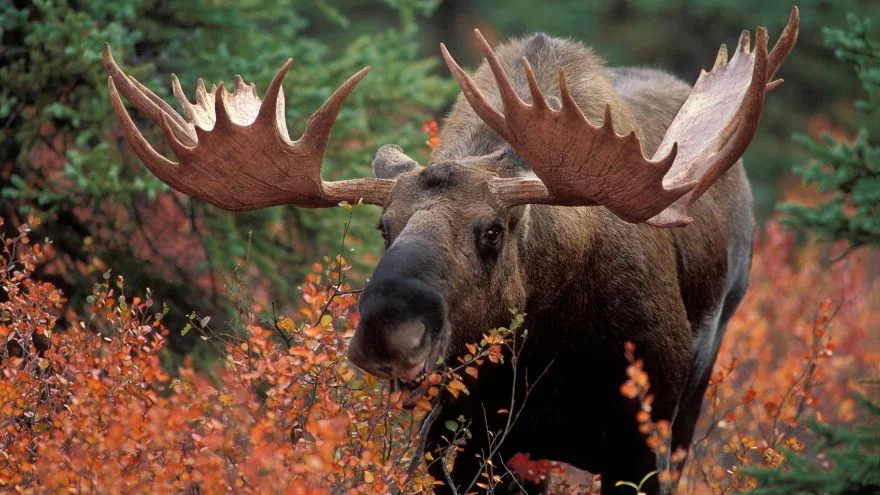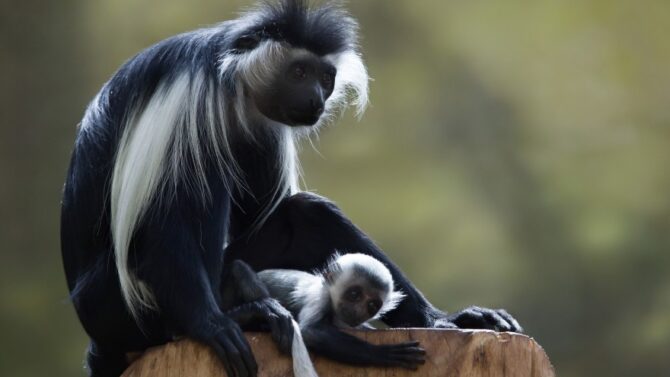If you’re planning to explore Canadian wildlife, it’s important to be aware of the potential dangers posed by some of the country’s most dangerous animals.
While Canada is generally considered a safe place to visit and live, the country’s 9.9 million square miles are home to several species that can pose a threat to humans.
From snakes and coyotes to bears, these animals are not always friendly and may even be life-threatening.
To help you stay safe, we’ve compiled a comprehensive guide to the top 10 most dangerous animals in Canada.
Whether you’re an experienced adventurer or just visiting, it’s crucial to prioritize safety when exploring the country’s stunning natural landscapes.
What are the Most Dangerous Animals in Canada?
1. Black Widow Spider
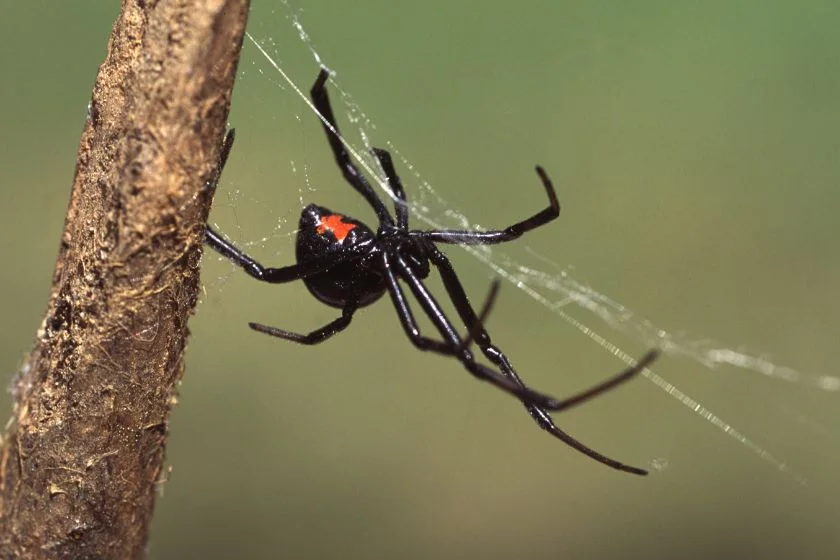
- Scientific name: Lactrodectus mactans
- Habitat: Crevices, woodpiles
- Threats: Venomous bite can cause muscle pain, cramps, and spasms
The black widow spider is one of the deadliest spiders in the world, capable of inflicting harm with its venom.
Though its venom isn’t considered fatal for healthy adults, it will cause damage. It is especially dangerous for children and elderly ones.
This spider is popular in North America but isn’t as widespread in Canada as it is in other North American countries.
Though venomous, the black widow spider isn’t aggressive. It shies away from people and remains hidden in dark places. It only bites when threatened.
2. Moose
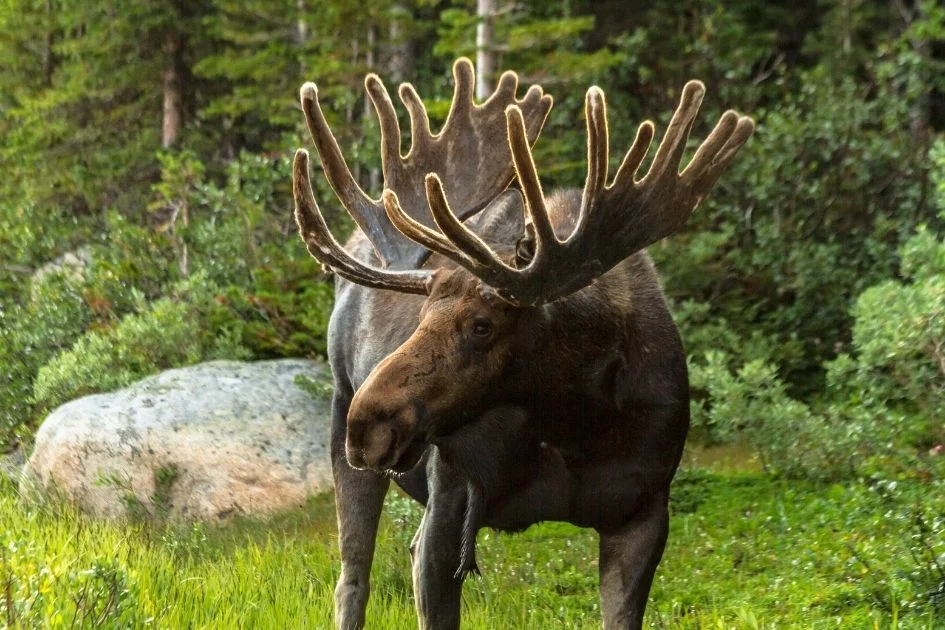
- Scientific name: Alces alces
- Habitat: Forests
- Threats: Large, unpredictable, territorial
The moose is the biggest animal in the deer family. It is called “moose” only in North America. Europe and Asia refer to this animal as an “elk.”
Besides Canada, it can be found in places like the United States, Russia, and Poland.
The moose isn’t a predator and won’t come at you with the intent of making you its next meal.
However, it doesn’t like being startled and will react if you disturb its peace. It will also attack if you get too close as it would be threatened.
Finally, be watchful while driving for any moose crossing the road. A collision with a 700 kg beast is not good news.
3. Prairie Rattlesnake
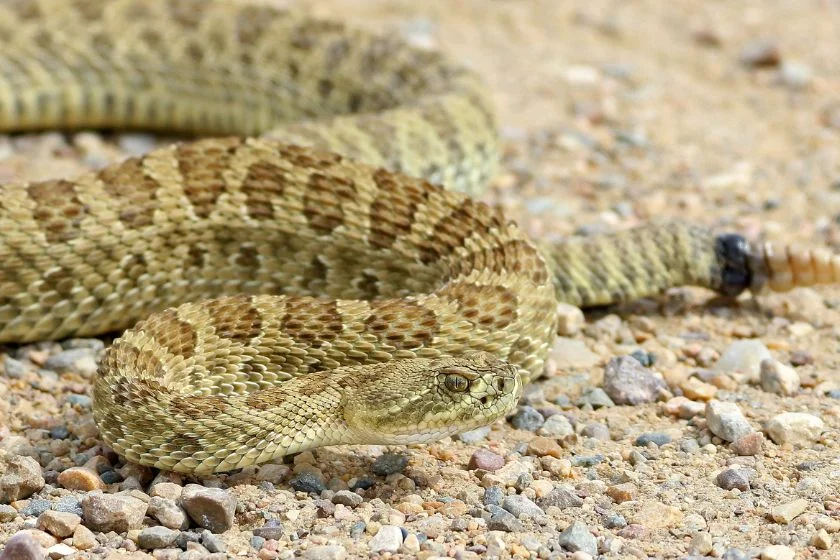
- Scientific name: Crotalus viridis
- Habitat: Prairie, woodlands
- Threats: Venomous and can deliver a painful, potentially deadly bite
The prairie rattlesnake is also called the Great Plains rattlesnake, and there are currently two subspecies of this reptile: the nominate subspecies known as the prairie rattlesnake and the Hopi rattlesnake.
It is a pit viper species that can be found in the United States, Canada, and Mexico.
The prairie rattlesnake is highly venomous, and it uses the venom to capture prey. It strikes before the prey can escape and injects the venom to kill the prey.
It tends not to attack humans but will bite if you step on it accidentally or disturb it.
4. Polar Bear
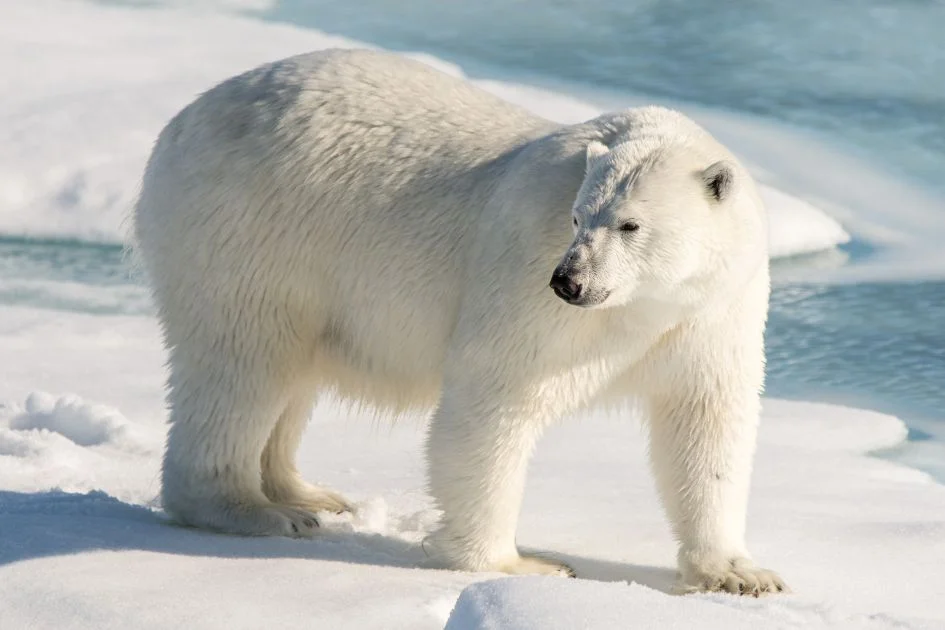
- Scientific name: Ursus maritimus
- Habitat: Sea ice
- Threats: Powerful and unpredictable, known to attack humans
The polar bear looks innocent like a living stuffed teddy bear. However, it poses the same risks as other bears, perhaps more so.
Because they have minimal contact with humans, they are not wary of us.
Polar bears can attack humans for predatory reasons, and though these attacks are rare, they can be fatal.
Polar bears live in arctic regions on sea ice and are listed as vulnerable, so you may not see one unless you go exploring the cold regions.
If you do meet one, try not to get its attention. Move away without making a sound.
5. Grizzly Bear

- Scientific name: Ursus arctos horribilis
- Habitat: Woodlands, prairies, forests
- Threats: One of the most dangerous animals in the world, powerful and unpredictable, known to attack humans
The grizzly bear is also called the Northern American brown bear or the grizzly, and it is a subspecies of the brown bear.
It is native to North America, going from Canada to other places like Mexico. It can also be found in continents like Asia and Europe.
The grizzly bear is considered more aggressive than the black bear (which we’ll soon look into) but is more cautious of humans than the polar bear.
It tends to avoid humans despite its size and will only attack if threatened. A female with young cubs is more likely to attack.
6. Black Bear
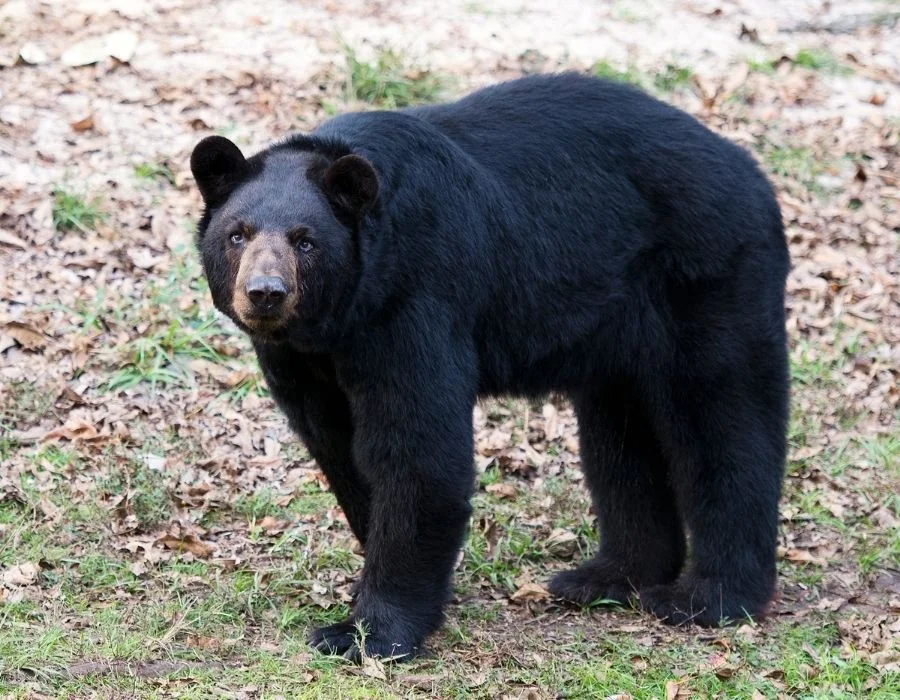
- Scientific name: Ursus americanus
- Habitat: Forests
- Threats: Can attack if threatened or provoked
The black bear’s full, common name is the American black bear, and it can be found only in North America.
It is smaller than the grizzly bear and the polar bear but is the most distributed in the United States.
The black bear is the least dangerous of all three bear species but isn’t completely safe.
The black bear is wary of humans, just like the grizzly, but doesn’t have the notorious reputation of the latter.
This bear would rather threaten than attack, and you can fight back, but as a last resort. That said, there have been some serious cases involving a black bear attack.
7. Cougars
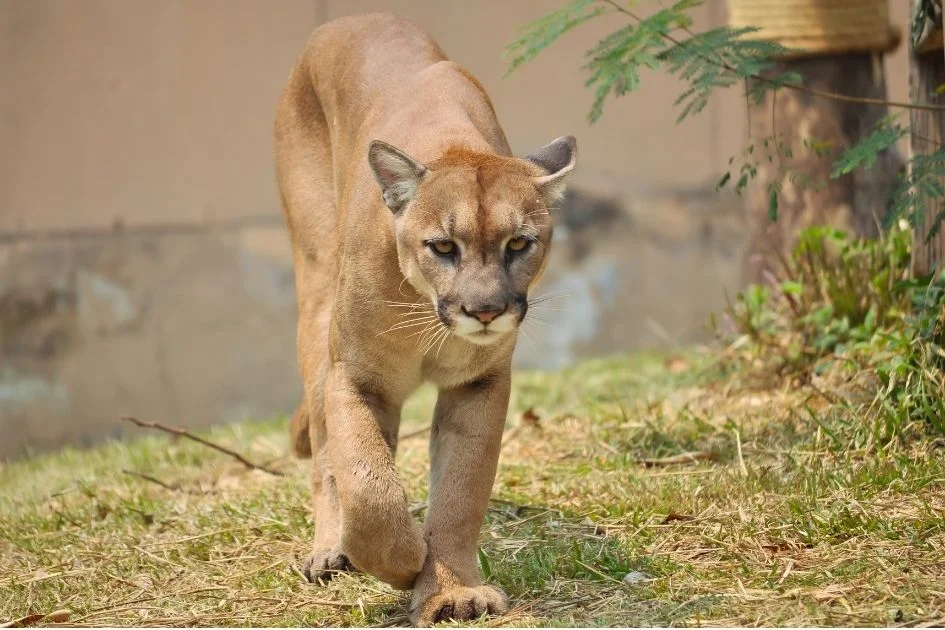
- Scientific name: Puma concolor
- Habitat: Mountains, rocks
- Threats: Stealthy predators with powerful paws and jaws, can attack humans when threatened or in search of food
The cougar has many other names. You might hear someone address this animal as puma, mountain lion, panther, and catamount.
It belongs to the Felidae (cat) family and can be found in the American continents, from Canada to South America.
The cougar is one of the heaviest cats in the world, and it uses that to its advantage when going after prey. It takes down the prey with its strong bite.
Cougars don’t consider humans as prey, but when starved they can change its mind.
Young cougars are more likely to attack humans, especially during spring and summer when they look for prey.
8. Massasauga Rattlesnake
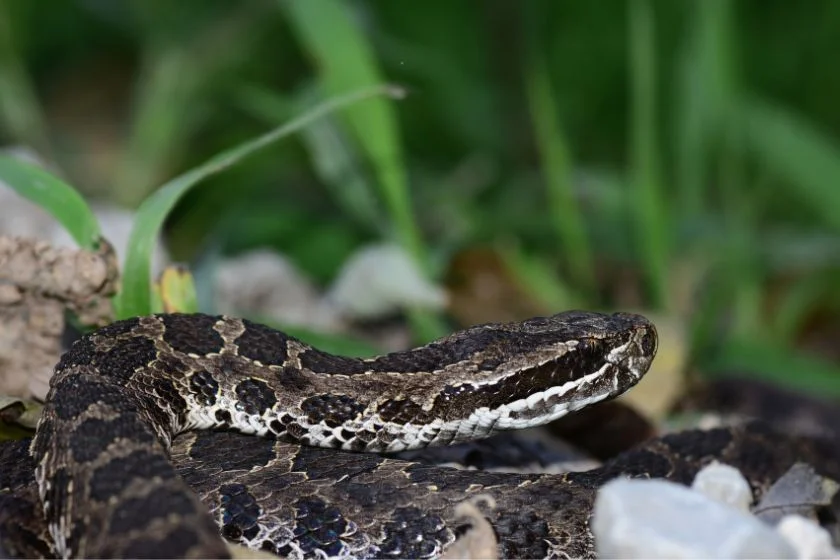
- Scientific name: Sistrurus catenatus
- Habitat: Wetlands, bottomland forests, bogs
- Threats: Venomous snake, bites can be fatal
The Massasauga rattlesnake is located mainly in North America, and besides Canada, its range extends to the United States and Mexico.
It is a pit viper, just like the prairie rattlesnake, and you can already pinpoint the main danger of this snake.
The Massasauga rattlesnake is highly venomous, like all pit vipers are, and is thus dangerous.
Its venom contains cytotoxic poison, and that can cause serious problems to the victim.
That said, this snake tends to avoid humans and will only strike if you accidentally step on it.
9. Wolf
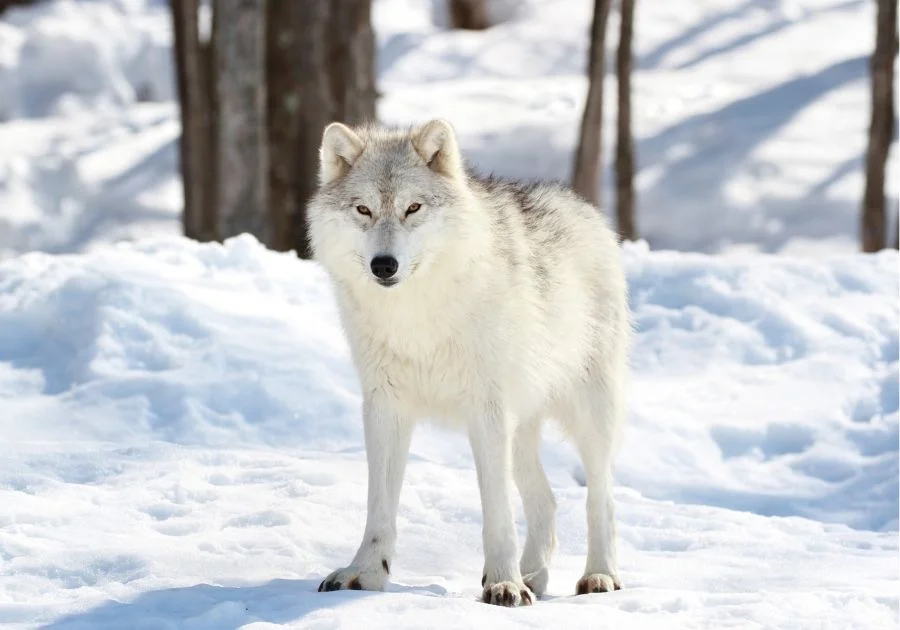
- Scientific name: Canis lupus
- Habitat: Forests, inland wetlands, grasslands, and shrublands
- Threats: Top predators, can attack humans when habituated
The wolf is the largest member of the Canidae (dog) family, and it was once thought to comprise numerous subspecies.
However, recent reports now identify only four subspecies: Artic, great plain, Mexican, and Northeastern wolves.
Wolves aren’t comfortable around humans, especially as humans have hunted them down for years. They also don’t consider humans to be prey.
However, these wild dogs can attack when in a pack and if the wolf in that environment isn’t scared of humans.
10. Coyote
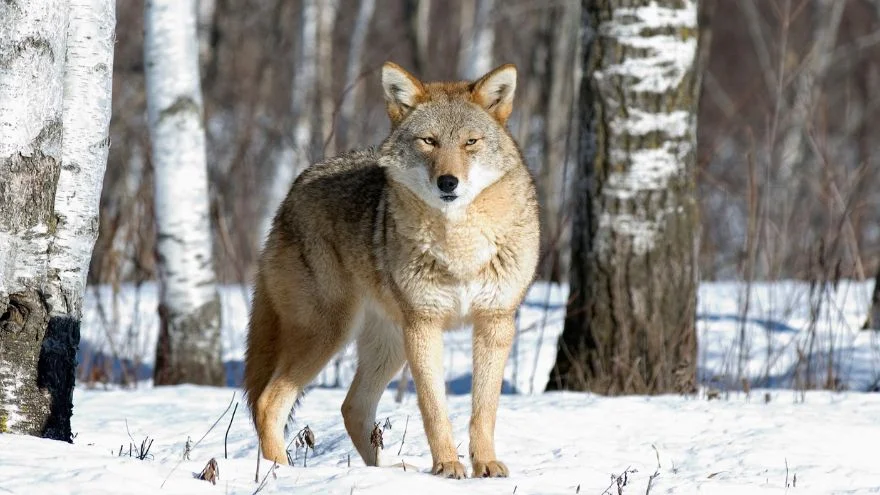
- Scientific name: Canis latrans
- Habitat: Grasslands
- Threats: Aggressive pack hunters, potential disease carriers
The coyote is related to the wolf as they both belong to the same family. However, it is smaller in size and is often more associated with the jackal.
Its second name is the American jackal, and it has historically been called the prairie wolf and brush wolf.
Coyotes would often be after your pets more than you, and they’re known to avoid adults. However, they can kill your pet and are also dangerous to children.
Coyotes are prone to rabies too, which can lead to unstable behavior. A coyote suffering from rabies can attack you for no reason.
Canada Wildlife Safety Tips
Not everyone gets the chance to observe animals in their natural habitat, rather than at a zoo or a documentary.
You get the chance as a privilege, and with that comes the responsibility of respecting the animals, both for their safety and for yours.
Here are some tips to accomplish that:
- If you plan on visiting one of Canada’s parks, make your research on the animals that live in the park. This would help you know what to expect.
- Do not feed any animal or accidentally leave unfinished food where an animal can reach it. This sends a wrong message, making the animal associate humans with food. This can cause attacks.
- If you’re with a dog, ensure that it stays on a leash and beside you. Dogs can stress wild animals and even trigger aggression, which won’t end well.
- Do not leave food crumbs outside your camp tent, as that can attract animals. Do not leave scented items either, like wastebins, dishes, and cutleries. They should all be in your vehicle or a storage locker.
FAQs
Does Canada have poisonous animals?
There are poisonous snakes and spiders in Canada, and you should avoid getting bit at all costs.
Two venomous snakes live in Canada, the Massasauga rattlesnake and the prairie rattlesnake. As for spiders, there’s the infamous black widow.
What is the most deadly animal in Canada?
Surprisingly, the moose is considered the most deadly animal in Canada, over snakes and wolves. The moose might look harmless, but it is capable of great harm.
Final Thoughts
A trip to Canada is worth the cost as the country has a lot of advantages for visitors worldwide.
It is also fun to explore Canadian wildlife and view the beauty of animals in nature.
Your fun would only be complete by respecting these most dangerous animals in Canada and avoiding those that are deemed dangerous, especially the moose.
